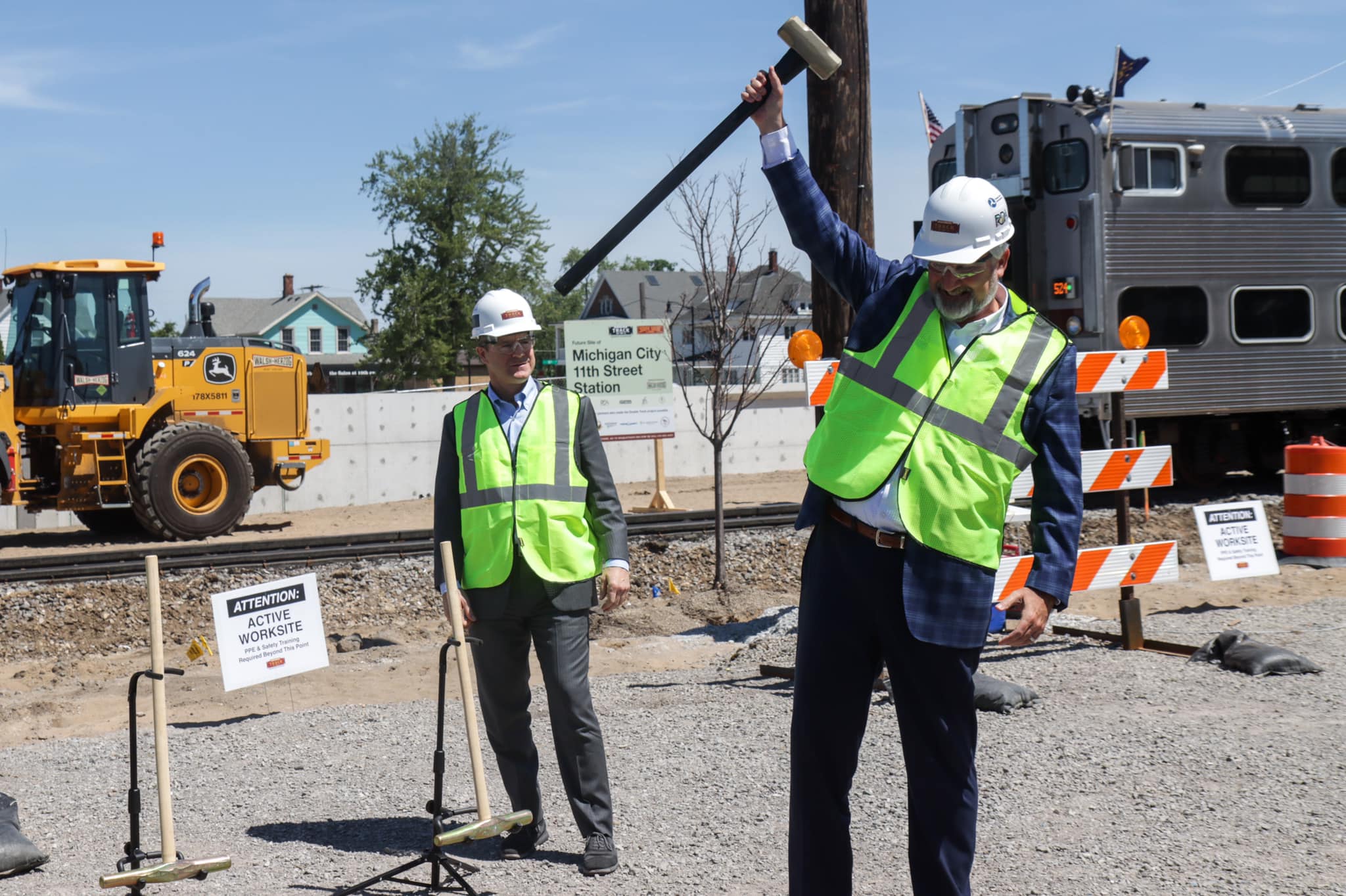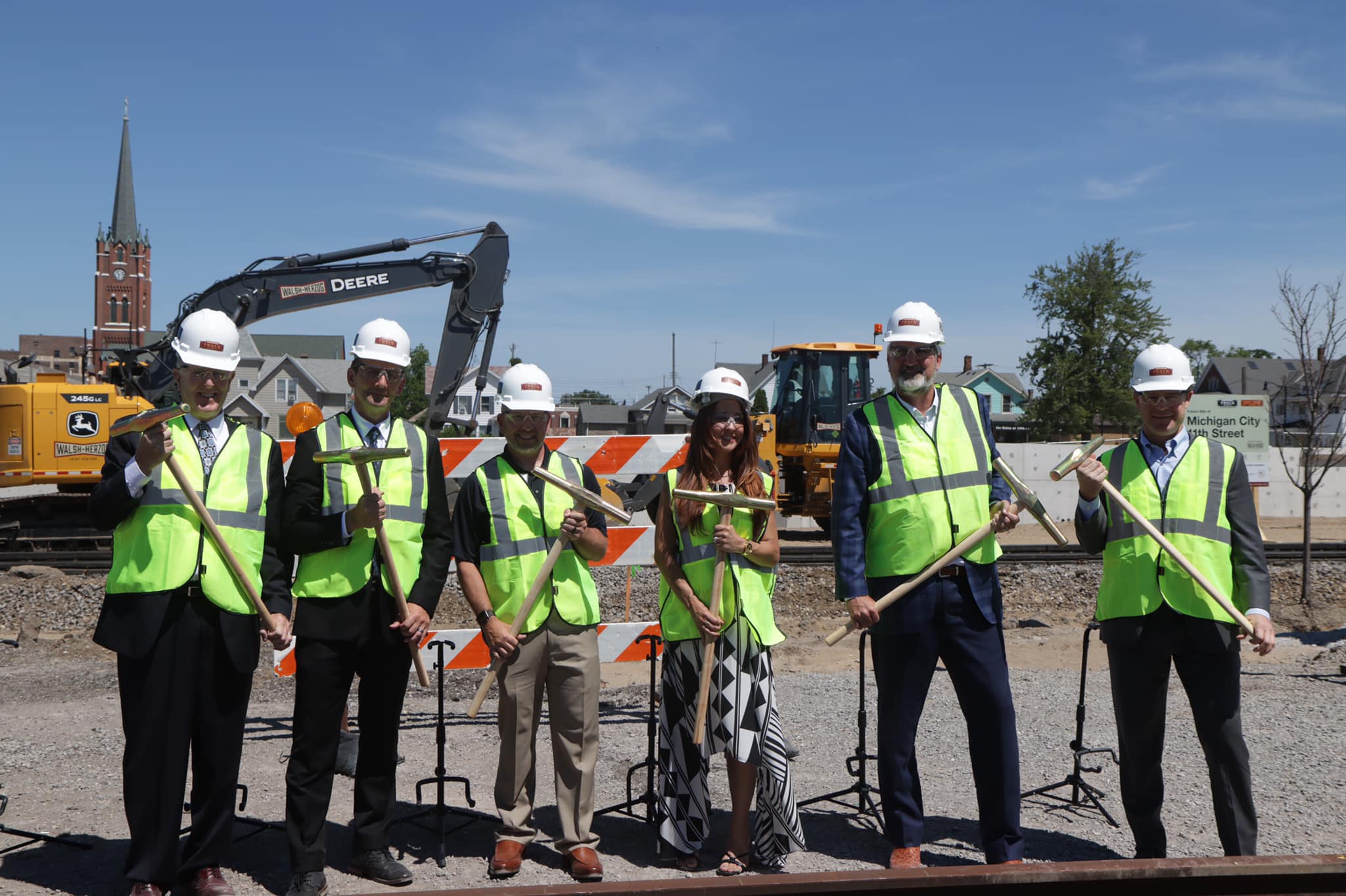Governor Eric Holcomb announced Monday that construction is moving forward on one of the largest public transit investments in Indiana’s history – double tracking of the South Shore Line from Michigan City to Gary.
The project adds nearly 18 miles of new track over a 26-mile corridor along the Northern Indiana Commuter Transportation District’s (NICTD) existing South Shore Line between Gary and Michigan City and makes multiple improvements to the existing line.
The Double Track Project includes a separated two-track right-of-way along two miles in Michigan City. The project will include replacing the current street-running tracks on 10th and 11th Streets, a new overhead contact system, 22 at-grade crossings, 20 culverts, platform upgrades at five stations and more than 1,400 parking spaces. The project will increase train frequency and drastically reduce travel time on the South Shore Line. Once the project is complete, service is planned to operate every 16 minutes during weekday peak periods and approximately every 75 minutes during weekday off-peak periods and evenings.
Holcomb’s office says the project will improve safety along the entire alignment, especially in Michigan City, where the new alignment will remove the street-running tracks, eliminate 20 at-grade crossings, and provide a safer environment for passengers boarding trains.
Construction is expected to finish in early 2024 with passenger service starting later in the year.
In addition to the Double Track project, Gov. Holcomb has made the West Lake Corridor extension of the South Shore Line a Next Level Agenda priority. Combined, the Double Track and West Lake Corridor projects are projected to attract approximately $2.7 billion in private investment to Northwest Indiana, and result in over 6,000 new jobs and $5 billion in economic impact by 2048.
Federal, state, regional and local officials joined Holcomb Monday to break ground on the Double Track project. The nearly $650 million project is funded through a mix of federal, state and local dollars with $173 million in federal funding coming from the Federal Transit Administration’s Capital Investment Grants program and another $24 million coming from the American Rescue Program.
The state has committed more than $340 million, locals have partnered to commit more than $80 million and NICTD has committed up to $30 million.


